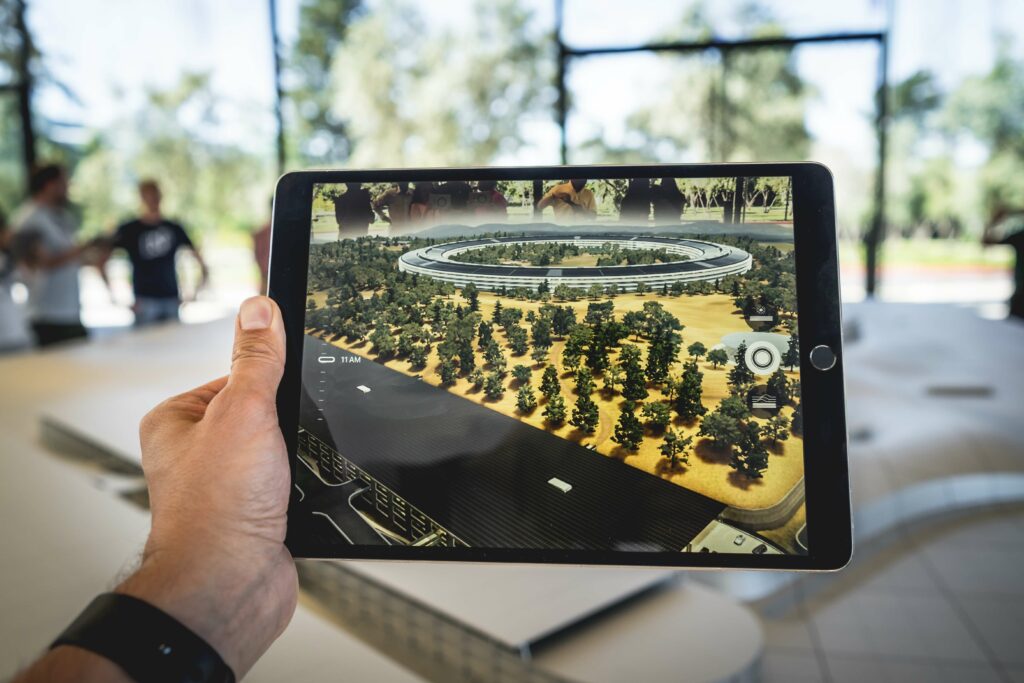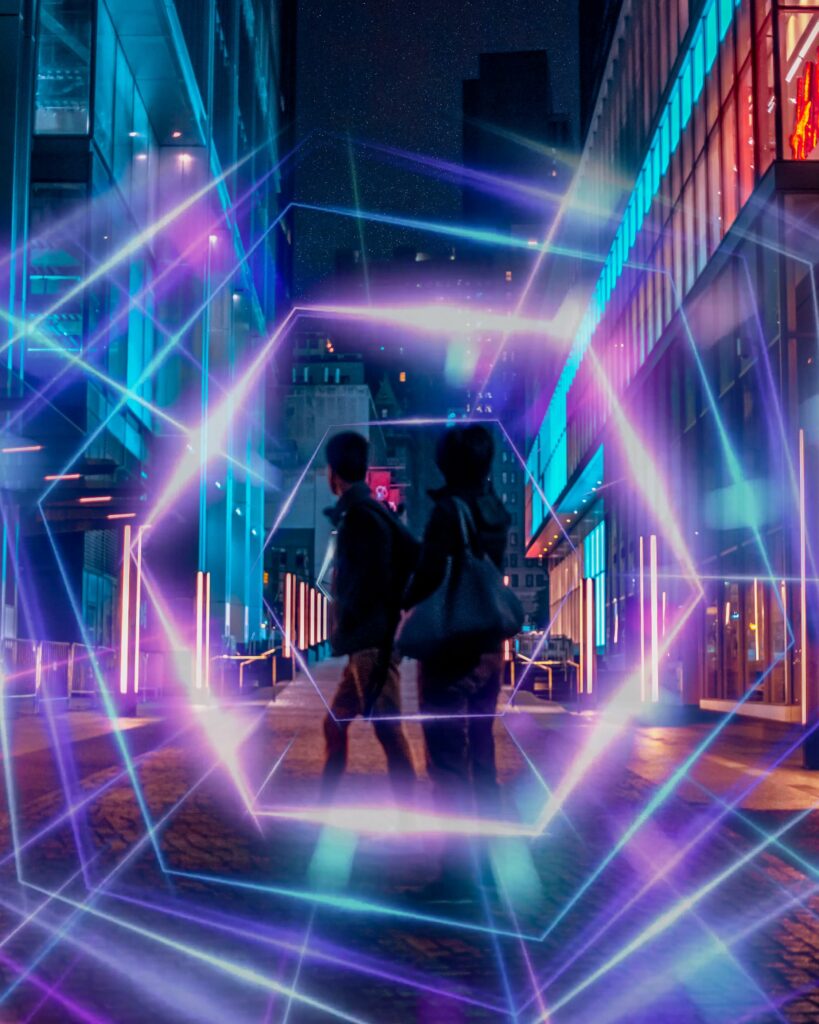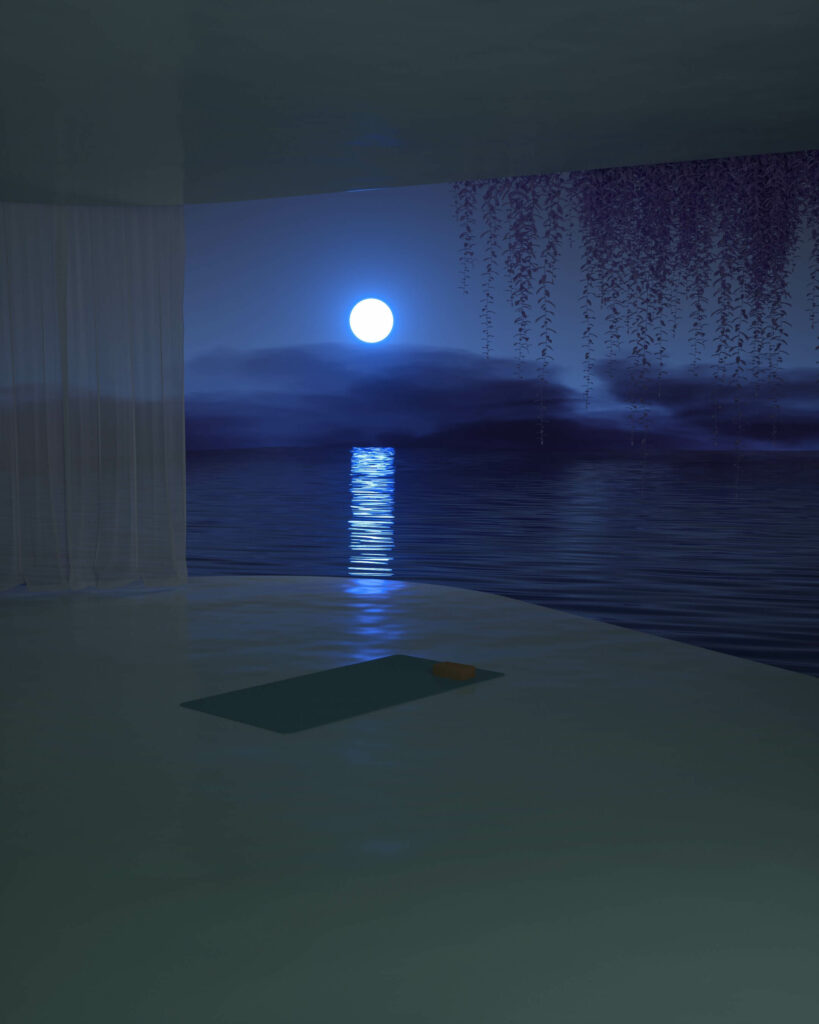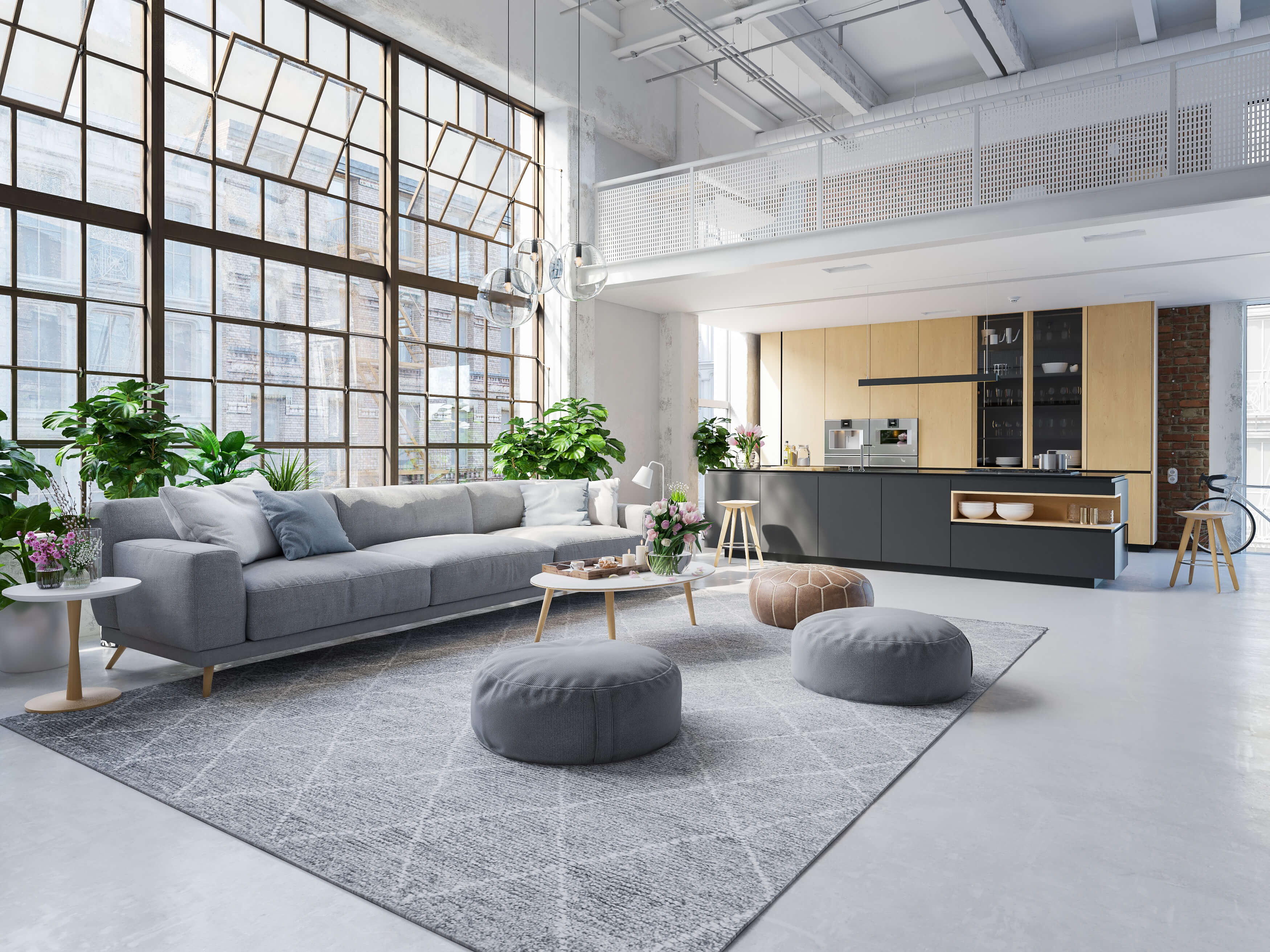
Image 1. The Metaverse allows us to design entire cities. Patrick Schneider on Unsplash
We’re just one step away from living virtual experiences in a world of endless possibilities. The Metaverse has arrived. For some years now we’ve been hearing how we can immerse ourselves in a parallel world. One that is intangible, yet equally as real as our physical environment. Cyberspace presents us with a boundless virtual universe. In this world we can connect and interact with others as avatars. This is real. It’s a first-person immersive experience. And as such, it is a reality that is increasingly viable. It will be possible for people to live out incredible stories hitherto deemed unimaginable. They will be able to move around and socialise in an idyllic environment. A place where spaces can be copied from reality and where they will feature as the main characters in fabulous landscapes and imaginary scenarios.
Many businesses have already shown interest in the metaverse, giving rise to a new era of digital change. In this way they have developed their own virtual spaces. In short, they have created their own metaverses. Companies such as Google, Nike, Microsoft, Amazon, Apple, Epic Games, Sony, Gucci, Balenciaga, Fortnite, Meta, and the Spanish brand, Zara, have all launched their own virtual projects. Thus, they have revolutionised the world of commerce.

Image 2 – Wilmer Martínez on Unsplash
In this context of three-dimensional and sensory experiences, at The Decorative Surfaces we question how the Metaverse will affect the future of architecture. We wonder whether, indeed, it opens up a chance to create. An opportunity to build and optimise structures and homes in a world where the limits imposed by gravity, the laws of physics, and environmental problems don’t exist.
The Metaverse. A door to architecture and design
To imagine the metaverse, we have to dispense with everything that surrounds us in the physical world. It involves travelling, with the help of augmented reality. Not to mention artificial intelligence. Consequently, it is possible to travel to unexplored locations, to places and environments unattainable in the real world. As a result, we can venture into space. We can travel back in time to ancient civilisations, moving freely in the most incredible scenarios.
It’s important to be aware that in the metaverse, entire cities and worlds are being created. In such places, the only restriction is their creators’ imagination. These are vast spaces that will need to be equipped. The metaverse is like a blank canvas for artists. It presents a deserted and solitary universe that needs designing, shaping, filling and, somehow, needs inhabiting. In other words, it provides a valuable opportunity, and potential directions that can lead to surprises and challenges in terms of innovation and design.
The continuity and success of the metaverse depends on the spaces that we’re capable of creating within it. Therefore, an imaginative and creative kind of architecture needs to be designed. This takes the form of parks, offices, shopping centres, homes, schools, and buildings. And, in addition, those physical spaces that brighten a city and its surroundings.
One of the most striking aspects of this universe is that its projects are unique. They are protected with the strictest security to prevent any duplication, copying or alteration. In other words, buyers are provided with an exclusive, unique product, tailored to their needs.
What’s more, according to several studies, virtual buildings ensure that architects and designers continue to be needed in future. Accordingly, the metaverse is considered to be the biggest, most significant development in property construction with the greatest movement in history. This technology will permit designers and architects to develop their creative side, with the logistical limitations of the real world.
NFTs and Architecture. The reality of digital buildings
Image 4. Virtual Reality with avatars
At the present time, virtual property sales and auctions exist. These are possible thanks to buyers willing to pay a fortune to acquire land in the metaverse. These are known as NFTs and they are currently revolutionising the world of investment.

Image 5 – D5 Render
NFTs (Non-fungible tokens) are completely digital products. They are considered to be unique and original with a real, lasting price. They cannot be modified or exchanged for another product of the same value. This digital market also exists in the world of architecture.
The best-known case is the first virtual house, Mars House, sold by the artist Krista Kim as an NFT for 500,000 dollars. Considered to be the first home in the Metaverse, the artist designed a house in the middle of a digital, imaginary landscape on Mars. For this design, Krista Kim was assisted by an architect and software for designing videogames. The buyer and current owner of the house received a unique file that can be downloaded in several immersive 3D worlds.
The first virtual house sold through the metaverse is a minimalist construction. It has a geometric design, bright neon colours and transparent walls.
We can surely say that we are witnessing a new way of selling architecture. This presents a vast array of possibilities. Virtual cities are being inundated with property investors who don’t want to miss out on being a part of the metaverse.
A clear example of a virtual city is “Genesis City”, created in 2017 in Decentraland. This virtual city, which can be compared to Washington D.C. in terms of its size, comprises 900,000 plots of land, which have been sold for up to 200,000 dollars. This is a clear example of the fact that NFTs have earned their place in the new way of understanding society.
The metaverse is the digital world where everything is possible. Its functionalities, as we have seen, are endless. We will be a more recreational, connected society, where only a very fine line separates the physical and virtual worlds. A long vista of opportunities is opening up for architecture, the economy, and the art world.

